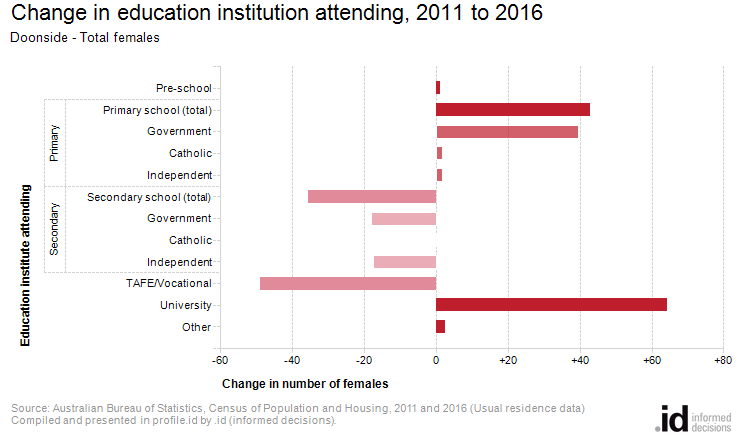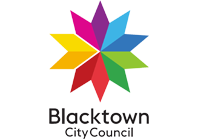Doonside
Education institution attending
In 2016, 325 females in Doonside were attending university. This represents 4.8% of the population, compared to 1.8% in Willmot.
The share of Doonside's population attending educational institutions reflects the age structure of the population, as it is influenced by the number of children attending school; proximity to tertiary education, which can mean young adults leaving home to be nearer to educational facilities and; the degree to which people are seeking out educational opportunities in adulthood, especially in their late teens and early twenties.
This data is often combined with Age Structure to identify areas with significant university student populations.
Derived from the Census question:
'What type of educational institution is the person attending?'
Total population
Source: Australian Bureau of Statistics, Census of Population and Housing (opens a new window) 2011 and 2016. Compiled and presented by .id (opens a new window)(informed decisions).
(Usual residence data)

Compiled and presented in profile.id by .id (informed decisions).

Compiled and presented in profile.id by .id (informed decisions).
Dominant groups
Analysis of the share of the female population attending educational institutions in Doonside in 2016 compared to Willmot shows that there was a lower proportion attending primary school, a similar proportion attending secondary school, and a higher proportion engaged in tertiary level education.
Overall, 8.3% of the female population were attending primary school, 7.3% of the female population were attending secondary institutions, and 7.3% were learning at a tertiary level, compared with 8.8%, 7.2% and 3.7% respectively for Willmot.
The major differences between the share of the female population attending learning institutions in Doonside and Willmot were:
- A larger percentage of females attending University (4.8% compared to 1.8%)
- A larger percentage of females not attending (68.0% compared to 65.2%)
- A larger percentage of females attending a Catholic secondary school (2.0% compared to 0.6%)
- A smaller percentage of females attending a Government primary school (5.5% compared to 6.9%)
Emerging groups
From 2011 to 2016, Doonside's female population increased by 196 people (+3.0%). This represents an average annual change of 0.58% per year over the period.
The largest change in the number of females attending education institutions in Doonside, between 2011 and 2016 was in those who nominated:
- University (+64 females)
